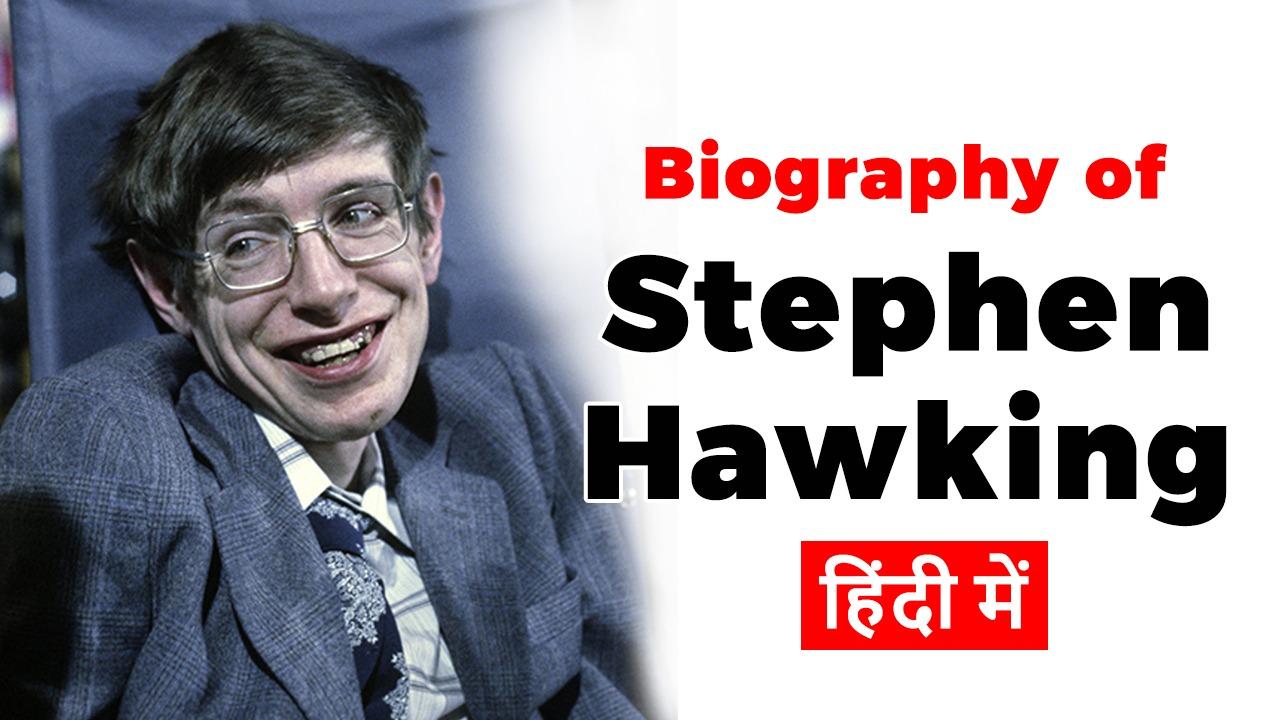Table of Contents
EARLY LIFE
- Hawking was born on 8 January 1942 in Oxford to Frank (1905–1986) and Isobel Eileen Hawking ( 1915–2013).Isobel worked as a secretary for a medical research institute, and Frank was a medical researcher.
- In 1950, when Hawking’s father became head of the division of parasitology at the National Institute for Medical Research, the family moved to St Albans, Hertfordshire.
- In St Albans, the family was considered highly intelligent and somewhat eccentric;meals were often spent with each person silently reading a book.
EDUCATION
- In St Albans, the eight-year-old Hawking attended St Albans High School for Girls for a few months.N Although known at school as “Einstein”, Hawking was not initially successful academically.
- As it was not possible to read mathematics there at the time, Hawking decided to study physics and chemistry. Despite his headmaster’s advice to wait until the next year, Hawking was awarded a scholarship after taking the examinations in March 1959.
- Hawking began his university education at University College, Oxford,in October 1959 at the age of 17. • Hawking estimated that he studied about 1,000 hours during his three years at Oxford. These unimpressive study habits made sitting his finals a challenge, and he decided to answer only theoretical.
THE STRUGGLE
- After receiving a first-class BA (Hons.) degree in physics and completing a trip to Iran with a friend, he began his graduate work at Trinity Hall, Cambridge, in October 1962.
- After being diagnosed with motor neurone disease, Hawking fell into a depression – though his doctors advised that he continue with his studies, he felt there was little point.
- His disease progressed more slowly than doctors had predicted. Although Hawking had difficulty walking unsupported, and his speech was almost unintelligible, an initial diagnosis that he had only two years to live.
THE RISING
- When Hawking began his graduate studies, there was much debate in the physics community about the prevailing theories of the creation of the universe: the Big Bang and Steady State theories.
- During 1965, he wrote his thesis on this topic. Hawking’s thesis was approved in 1966.There were other positive developments: Hawking received a research fellowship at Gonville and Caius College at Cambridge; he obtained his PhD degree in applied mathematics and theoretical physics, specialising in general relativity and cosmology, in March 1966; and his essay “Singularities and the Geometry of Space-Time” shared top honours with one by Penrose to win that year’s prestigious Adams Prize.
SPACE – TIME
- In 1970, Hawking postulated what became known as the second law of black hole dynamics.His essay titled “Black Holes” won the Gravity Research Foundation Award in January 1971.Hawking’s first book, The Large Scale Structure of Space-Time, written with George Ellis, was published in 1973.
- His results, which Hawking presented from 1974, showed that black holes emit radiation, known today as Hawking radiation, which may continue until they exhaust their energy and evaporate.
- Hawking was elected a Fellow of the Royal Society (FRS) in 1974, a few weeks after the announcement of Hawking radiation. At the time, he was one of the youngest scientists to become a Fellow.
THE BRIEF HISTORY OF TIME
- Hawking returned to Cambridge in 1975 to a more academically senior post, as readerin gravitational physics.
- He decided in 1982 to write a popular book about the universe that would be accessible to the general public. A first draft of the book, called A Brief History of Time, was completed in 1984.
- One of the first messages Hawking produced with his speech-generating device was a request for his assistant to help him finish writing A Brief History of Time.
THE BRIEF HISTORY OF TIME
- The book was published in April 1988 in the US and in June in the UK, and it proved to be an extraordinary success, rising quickly to the top of best-seller lists in both countries and remaining there for months.The book was translated into many languages, and ultimately sold an estimated 9 million copies.
- Hawking pursued his work in physics: in 1993 he coedited a book on Euclidean quantum gravity with Gary Gibbons and published a collected edition of his own articles.
LATER
- Hawking continued his writings for a popular audience, publishing The Universe in a Nutshell in 2001, and A Briefer History of Time, which he wrote in 2005 withto update his earlier works.
- In 2007, Hawking and his daughter Lucy published George’s Secret Key to the Universe, a children’s book designed to explain theoretical physics in an accessible fashion and featuring characters similar to those in the Hawking family.The book was followed by sequels in 2009, 2011, 2014 and 2016.
- In 2002, following a UK-wide vote, the BBC included Hawking in their list of the 100 Greatest Britons.
- During his career, Hawking supervised 39 successful PhD students.Hawking created Stephen Hawking: Expedition New Earth, a documentary on space colonisation, as a 2017 episode of Tomorrow’s World.
DEATH
- Hawking died at his home in Cambridge, England, on 14 March 2018, at the age of 76.His family stated that he “died peacefully”.
- Hawking was born on the 300th anniversary of Galileo’s death and died on the 139th anniversary of Einstein’s birth.
Biography Free PDF






















 WhatsApp
WhatsApp